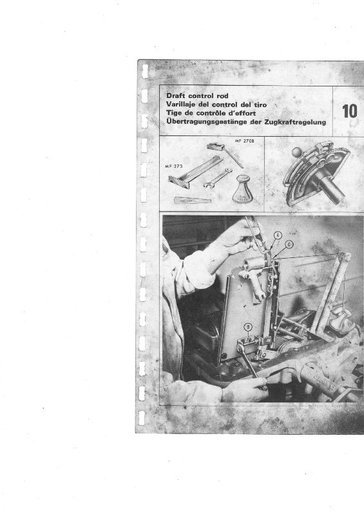Come on you 135 experts, DavidP where are you?
I've been doing this check procedure from DavidP. (Draft control in the rearmost position throughout):
I've been doing this check procedure from DavidP. (Draft control in the rearmost position throughout):
The position control feels fine, the vertical lever goes backwards and forwards, UNTIL the lift arms are raised (the lowered position in normal life), then it seems like it's disconnected. Tried it with the draft control in the frontmost position and it just flicked back. I reckon everyone must be getting pretty sick of this, so thanks everyone who's taken a look. I'm stumped and wondering where to go from here.First of all position the hydraulic cover upside down but in a position where the upper lift arms can be lifted by hand and lowered. Have an assistant to hand to move the upper lift arms.
Tell the assistant to hold the upper arms up..in effect in the lowered position when fitted. Move the Position Lever into the lowered position. The vertical lever should now be pushed forward (as in fitted position) to put the control valve in the 'discharge position.
To recap if the cover were fitted; the position control lever is down, the 3-pt is down and the vertical lever is leaning forward. Exert gentle pressure rearward on the vertical lever but not enough to move it.
Now raise the Position Control lever slowly. The vertical lever will move rearward (as if fitted) through the neutral position and into the pumping position. Leave the PC lever at about halfway. Tell you assistant to lower the upper lift arms slowly (raise them when fitted). As the upper arms approach the selected position of the PC lever the vertical lever should move into the neutral position. If it does this it is working OK. You will probably need to do this quite a few times to firstly understand how it works and the relationship between the PC lever, upper lift arms and vertical lever position.
If you are able to support the hyd cover right way up it will be a lot easier.



